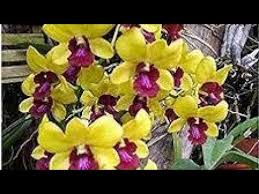Exploring Famous Sato Cymbidium Orchid Gardens Around the World

Sato Cymbidium orchids, renowned for their stunning blooms and captivating fragrances, have become a favorite among orchid enthusiasts and collectors. These orchids, with their rich cultural significance and diverse varieties, have led to the establishment of numerous gardens dedicated to their cultivation and display. In this article, we will embark on a journey to explore some of the most famous Sato Cymbidium orchid gardens around the world, delving into their unique features, cultivation practices, and the experiences they offer to visitors.
## 1. Introduction to Sato Cymbidium Orchids
Before diving into the enchanting world of Sato Cymbidium orchid gardens, it’s essential to understand what makes these orchids so special. Sato Cymbidium orchids are characterized by their long-lasting blooms, vibrant colors, and elegant shapes. Native to Asia, particularly Japan, these orchids thrive in temperate climates and are often associated with cultural symbolism, such as beauty, purity, and elegance.
The cultivation of Sato Cymbidium orchids has a rich history, dating back centuries. They are often grown in specialized environments, such as greenhouses or shade houses, where temperature and humidity can be carefully controlled. The demand for these exquisite flowers has led to the establishment of various gardens worldwide, where enthusiasts can appreciate their beauty in a serene and picturesque setting.
## 2. Iconic Sato Cymbidium Orchid Gardens
### 2.1 The Orchid Garden at the Singapore Botanic Gardens
Located in the heart of Singapore, the Orchid Garden is a haven for orchid lovers. This expansive garden features a vast collection of over 1,000 species and 2,000 hybrid orchids, including a dedicated section for Sato Cymbidium orchids.
#### 2.1.1 Features of the Orchid Garden
– **Diverse Collection:** Visitors can admire a wide variety of Sato Cymbidium orchids, showcasing an array of colors, sizes, and shapes. The garden’s collection includes both traditional and modern hybrids, reflecting the evolution of orchid cultivation.
– **Educational Programs:** The Orchid Garden offers educational programs and workshops, allowing visitors to learn about the cultivation and care of Sato Cymbidium orchids. These programs emphasize the importance of sustainable practices in orchid gardening.
– **Stunning Landscape:** The garden’s picturesque landscape, featuring lush greenery and tranquil water features, provides a serene environment for visitors to relax and appreciate the beauty of orchids.
#### 2.1.2 Visitor Experience
Visitors to the Orchid Garden can enjoy guided tours that highlight the unique characteristics of Sato Cymbidium orchids. The knowledgeable staff shares insights into their care, cultivation techniques, and the significance of orchids in Singapore’s culture.
### 2.2 The National Orchid Garden, Malaysia
Nestled within the Perdana Botanical Gardens in Kuala Lumpur, the National Orchid Garden is another prominent destination for orchid enthusiasts. The garden is home to a diverse collection of over 1,200 species of orchids, including Sato Cymbidium orchids.
#### 2.2.1 Features of the National Orchid Garden
– **Thematic Displays:** The garden features thematic displays that showcase the beauty and diversity of Sato Cymbidium orchids. These displays are carefully curated to highlight specific characteristics, such as flower color and size.
– **Sustainability Efforts:** The National Orchid Garden is committed to promoting sustainable orchid cultivation. Visitors can learn about eco-friendly practices, including organic growing techniques and conservation efforts to protect orchid habitats.
– **Cultural Significance:** The garden often hosts cultural events and exhibitions that celebrate the rich heritage of orchids in Malaysia. Visitors can explore the historical context of Sato Cymbidium orchids and their importance in local traditions.
#### 2.2.2 Visitor Experience
Guests at the National Orchid Garden can participate in guided tours that provide in-depth knowledge about Sato Cymbidium orchids and their role in Malaysian culture. The garden’s serene atmosphere and stunning displays make it an ideal destination for nature lovers and photographers.
### 2.3 The Orchid House at the Royal Botanic Gardens, Kew
Located in London, England, the Royal Botanic Gardens at Kew is a UNESCO World Heritage site renowned for its extensive plant collections and research facilities. The Orchid House within the gardens showcases a remarkable array of orchids, including Sato Cymbidium varieties.
#### 2.3.1 Features of the Orchid House
– **Historic Collection:** The Orchid House houses a historic collection of orchids, some of which date back to the 18th century. Visitors can witness the evolution of orchid cultivation and the impact of Sato Cymbidium orchids on the horticultural world.
– **Conservation Initiatives:** Kew Gardens is dedicated to plant conservation and offers insights into the importance of preserving orchid species. The Orchid House provides educational resources about the threats faced by orchids in the wild.
– **Stunning Architecture:** The Orchid House’s unique architectural design complements the beauty of the orchids on display. The glasshouse allows natural light to filter in, creating a perfect environment for the orchids to thrive.
#### 2.3.2 Visitor Experience
Visitors to the Orchid House can join guided tours led by knowledgeable staff who share fascinating stories about the history and significance of orchids, including Sato Cymbidium varieties. The serene setting of Kew Gardens provides an opportunity to relax and enjoy the beauty of nature.
### 2.4 The Sato Cymbidium Orchid Garden in Taiwan
Taiwan is renowned for its vibrant orchid industry, and the Sato Cymbidium Orchid Garden is a prime example of the country’s commitment to orchid cultivation. Located in the Miaoli County, this garden is dedicated exclusively to Sato Cymbidium orchids.
#### 2.4.1 Features of the Sato Cymbidium Orchid Garden
– **Extensive Collection:** The garden boasts an extensive collection of Sato Cymbidium orchids, featuring various hybrids and cultivars. Visitors can explore the diversity of colors and shapes that make these orchids so appealing.
– **Research and Development:** The garden is actively involved in research and development efforts to create new Sato Cymbidium hybrids. Visitors can learn about the innovative techniques used to enhance orchid breeding and cultivation.
– **Cultural Events:** The garden hosts annual events and exhibitions that celebrate the beauty of Sato Cymbidium orchids. These events often feature workshops, demonstrations, and opportunities to purchase orchids directly from growers.
#### 2.4.2 Visitor Experience
Visitors to the Sato Cymbidium Orchid Garden can participate in guided tours, where they can learn about the unique characteristics of Sato Cymbidium orchids. The garden’s focus on research and development provides insights into the future of orchid cultivation.
### 2.5 The Orchid Conservatory at the Denver Botanic Gardens
The Denver Botanic Gardens in Colorado, USA, is home to the Orchid Conservatory, a stunning glass structure that houses a diverse collection of orchids, including Sato Cymbidium varieties.
#### 2.5.1 Features of the Orchid Conservatory
– **Climate-Controlled Environment:** The Orchid Conservatory features a climate-controlled environment that replicates the natural habitat of orchids, allowing Sato Cymbidium orchids to thrive year-round.
– **Diverse Displays:** Visitors can explore various displays highlighting different orchid species, including Sato Cymbidium orchids. The conservatory emphasizes the beauty and diversity of orchids from around the world.
– **Educational Programs:** The Denver Botanic Gardens offers educational programs focused on orchid care, cultivation, and conservation. These programs provide valuable information for both novice and experienced orchid enthusiasts.
#### 2.5.2 Visitor Experience
Guests at the Orchid Conservatory can enjoy self-guided tours or join scheduled programs led by knowledgeable staff. The immersive environment allows visitors to appreciate the beauty of orchids in a unique setting.
## 3. Conclusion
In this first part of our exploration of famous Sato Cymbidium orchid gardens, we’ve highlighted some of the most renowned locations around the world, showcasing their unique features, visitor experiences, and the significance of Sato Cymbidium orchids within each garden. These gardens not only serve as havens for orchid enthusiasts but also play a vital role in education, conservation, and the promotion of sustainable practices in horticulture.
In the next part of our journey, we will delve deeper into the cultivation techniques used in these gardens, the impact of climate on Sato Cymbidium orchids, and how these gardens contribute to the global appreciation of these exquisite flowers. Whether you’re a seasoned orchid grower or a curious newcomer, these gardens offer a wealth of knowledge and inspiration for anyone passionate about the world of orchids.
# Exploring Famous Sato Cymbidium Orchid Gardens Around the World (Part 2)
In the previous article, we embarked on a journey to explore some of the most famous Sato Cymbidium orchid gardens around the world, learning about their unique features, collections, and the experiences they offer to visitors. In this second part, we will delve deeper into the cultivation techniques employed in these gardens, the impact of climate on Sato Cymbidium orchids, and how these gardens contribute to the global appreciation of these exquisite flowers. We will also look at how visitors can enhance their experience and engage with the world of Sato Cymbidium orchids.
## 4. Cultivation Techniques in Sato Cymbidium Orchid Gardens
### 4.1 Greenhouse Management
Sato Cymbidium orchids thrive in specific environmental conditions, making greenhouse management essential for their successful cultivation. The key factors that influence orchid growth include temperature, humidity, light, and ventilation.
#### 4.1.1 Temperature Control
Maintaining the right temperature is crucial for the healthy growth of Sato Cymbidium orchids. Most varieties prefer temperatures between 65°F (18°C) at night and 75°F (24°C) during the day. Gardens use thermostats and heaters to regulate temperature, ensuring optimal conditions year-round.
#### 4.1.2 Humidity Management
Sato Cymbidium orchids thrive in humid environments, typically requiring humidity levels between 50-70%. To achieve this, gardens utilize misting systems, humidity trays filled with water and pebbles, and regular watering to maintain moisture levels. Proper humidity not only promotes healthy growth but also enhances the longevity of the flowers.
#### 4.1.3 Light Requirements
Light is essential for the photosynthesis process in orchids. Sato Cymbidium orchids prefer bright, indirect light, making careful placement of plants within the greenhouse vital. Many gardens use shade cloths or specialized lighting systems to mimic natural sunlight, ensuring that the orchids receive the right amount of light without the risk of sunburn.
#### 4.1.4 Ventilation Systems
Good air circulation is crucial for preventing fungal infections and promoting healthy growth. Most orchid gardens have ventilation systems in place, which include fans and vents that help maintain air movement. This ensures that the plants remain healthy and free from diseases.
### 4.2 Soil and Potting Practices
Proper soil and potting practices are critical for the health of Sato Cymbidium orchids. These orchids prefer well-draining potting media that allows for adequate air circulation around the roots.
#### 4.2.1 Potting Media
Common potting materials for Sato Cymbidium orchids include bark, perlite, and sphagnum moss. The use of these materials allows for excellent drainage and aeration, preventing root rot. Gardeners often mix these components to create a balanced potting medium tailored to the specific needs of the orchids.
#### 4.2.2 Repotting Techniques
Repotting is an essential practice in maintaining healthy Sato Cymbidium orchids. Most experts recommend repotting every one to two years to refresh the potting media and provide the plants with ample room to grow. The process involves gently removing the orchid from its pot, inspecting the roots for any signs of rot, and placing it in a new pot with fresh media.
### 4.3 Fertilization and Pest Management
#### 4.3.1 Fertilization Strategies
Sato Cymbidium orchids benefit from regular fertilization, particularly during the growing season. Gardeners often use a balanced, water-soluble fertilizer diluted to half strength. The frequency of fertilization can vary but is typically done every two weeks during growth periods and once a month during dormancy.
#### 4.3.2 Pest and Disease Management
Orchid gardens employ integrated pest management strategies to protect Sato Cymbidium orchids from common pests such as aphids, spider mites, and mealybugs. These strategies include the use of organic insecticidal soaps, neem oil, and beneficial insects like ladybugs. Regular monitoring and inspection help detect issues early, ensuring that plants remain healthy and vibrant.
## 5. The Role of Climate in Sato Cymbidium Orchid Growth
### 5.1 Climate Zones
Sato Cymbidium orchids are typically found in regions with moderate temperatures and humidity, which can be a challenge in certain climates. Understanding the climate zones in which these orchids thrive is crucial for successful cultivation.
#### 5.1.1 Tropical and Subtropical Regions
In tropical and subtropical areas, Sato Cymbidium orchids can be grown outdoors year-round. These regions provide the ideal combination of warmth and humidity that these orchids crave. However, gardeners must monitor the microclimate around the plants, ensuring that they receive protection from extreme heat or excessive rainfall.
#### 5.1.2 Temperate Zones
In temperate regions, where winter temperatures can drop significantly, gardeners often grow Sato Cymbidium orchids in greenhouses or indoors. This allows for better control over environmental conditions and helps protect the orchids from frost and cold temperatures.
### 5.2 Impact of Weather Patterns
The weather patterns can significantly affect the growth and flowering of Sato Cymbidium orchids. Seasonal changes, including rainfall and humidity fluctuations, can impact their growth cycles.
#### 5.2.1 Seasonal Adaptations
In regions with distinct seasons, Sato Cymbidium orchids typically enter a resting period during the winter months. During this time, watering and fertilization are reduced, allowing the plants to conserve energy. As spring arrives, increased light and warmth stimulate growth and flowering.
#### 5.2.2 Climate Change Considerations
Climate change poses potential threats to Sato Cymbidium orchids, with rising temperatures and changing precipitation patterns affecting their habitats. Orchid gardens are increasingly focusing on sustainable practices to mitigate these impacts, such as water conservation, soil health management, and biodiversity preservation.
## 6. Enhancing the Visitor Experience in Orchid Gardens
### 6.1 Educational Programs and Workshops
Many orchid gardens offer educational programs and workshops designed to engage visitors of all ages. These programs provide valuable insights into orchid cultivation, care, and conservation.
#### 6.1.1 Orchid Care Workshops
Hands-on workshops teach participants how to care for Sato Cymbidium orchids, covering topics such as repotting, fertilization, and pest management. These workshops encourage visitors to explore their passion for orchids and equip them with practical skills for successful cultivation.
#### 6.1.2 Guided Tours
Guided tours led by knowledgeable staff offer visitors an in-depth understanding of Sato Cymbidium orchids and their significance in various cultures. These tours often highlight unique specimens and provide stories about their cultivation and history.
### 6.2 Special Events and Exhibitions
Orchid gardens frequently host special events and exhibitions to celebrate the beauty of orchids and engage the community.
#### 6.2.1 Orchid Shows
Orchid shows are popular events where growers showcase their best specimens, including Sato Cymbidium orchids. These events often include competitions, where visitors can vote for their favorite orchids. The atmosphere is vibrant, filled with the fragrance of blooming orchids and the excitement of fellow enthusiasts.
#### 6.2.2 Cultural Festivals
Many orchid gardens incorporate cultural festivals into their programming, celebrating the historical and cultural significance of orchids in various traditions. These festivals may feature performances, food, and educational activities that highlight the role of Sato Cymbidium orchids in cultural practices.
### 6.3 Community Engagement
Engaging the local community is vital for orchid gardens, as they strive to raise awareness about the importance of orchids and their conservation.
#### 6.3.1 Volunteer Opportunities
Many gardens offer volunteer programs, allowing community members to contribute to orchid care, events, and educational outreach. Volunteers gain hands-on experience while fostering a sense of community among fellow orchid enthusiasts.
#### 6.3.2 School Programs
Orchid gardens often collaborate with local schools to provide educational programs that promote awareness of plant biology, ecology, and conservation. These programs inspire the next generation of botanists and conservationists, fostering a love for nature and orchids.
## 7. Conclusion
As we conclude our exploration of famous Sato Cymbidium orchid gardens around the world, it’s clear that these gardens play a vital role in the appreciation, conservation, and cultivation of these exquisite flowers. From their unique cultivation techniques to their commitment to education and community engagement, these gardens provide valuable resources and experiences for orchid enthusiasts and casual visitors alike.
The journey of Sato Cymbidium orchids continues to inspire and captivate individuals across the globe. By understanding the intricate relationship between climate, cultivation practices, and the cultural significance of these orchids, we can foster a deeper appreciation for the beauty and diversity of Sato Cymbidium orchids. Whether you are a seasoned grower or simply someone who enjoys the beauty of these flowers, visiting these gardens offers a chance to connect with nature and the world of orchids.
As orchid enthusiasts, let us celebrate the remarkable beauty of Sato Cymbidium orchids and advocate for their preservation in our gardens and communities, ensuring that future generations can continue to admire and appreciate these exquisite blooms.

